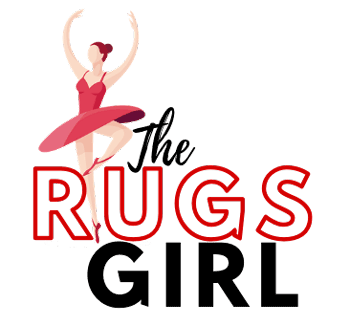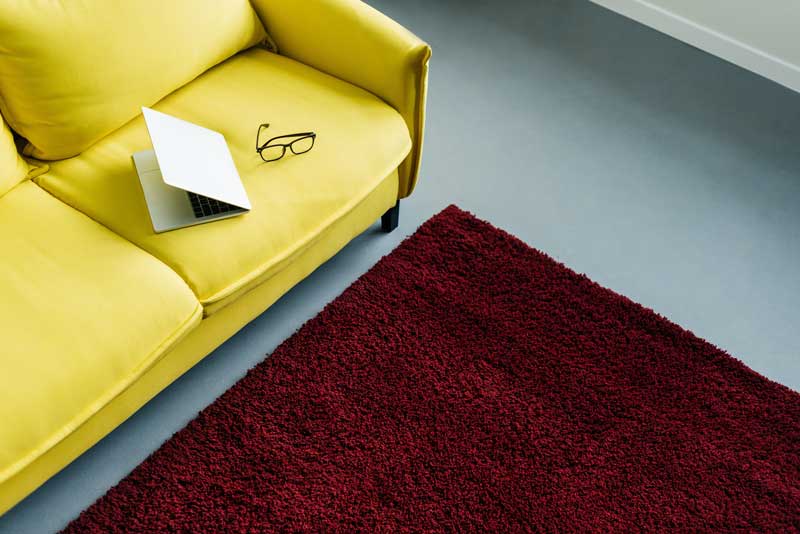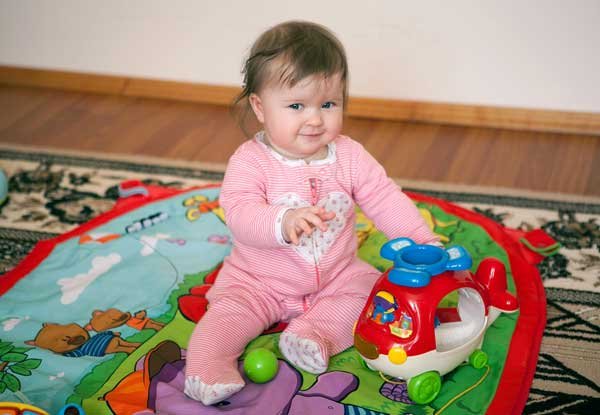Polypropylene Rug Safety: 5 Polypropylene Rugs Health Risks
Polypropylene Rugs Health Risks are a concern that you should address. Are polypropylene rugs safe for humans, animals, and the environment?
If you are questioning polypropylene rug safety, this post will give you 5 polypropylene rugs health risks to show you some ways polypropylene rugs are toxic.
I have also written a guide on how to flatten polypropylene rugs with bumps, curls, wrinkles and dents to improve security in your home and keep rugs looking smart.
What is Polypropylene?
Another name for Polypropylene is Olefin, which is one of the many types of synthetic fibers. Other types include Nylon, Polyester, and Wool among others.
It’s the most popular synthetic fiber after Nylon accounting for 30% carpets and rugs made in the United States.
This fiber was first manufacturing in 1957, Italy by two Noble Prize winners-Karl Ziegler and Giulio Natta.






Are Polypropylene rugs soft?
YES.
Sisal is the natural rug material, which almost looks and feels like polypropylene.
Since the latter is a synthetic rug fiber, it’s always softer to add more comfort, warmth, and coziness.
Is Polypropylene a good rug material?
YES.
It is also an affordable and durable rug material, which will be stain-resistant and easy to clean. This type of fiber is also soft to provide adequate comfort and warmth to the under feet.

If you are curious or in a hurry, This is Our Top Polypropylene Rug…
Unique Loom Traditional Area Rug
Pile: This rug is made from 100% polypyrene with a jute backing to increase its durability and help in keeping the rug in place to improve security in your home.
Non-shedding: This will keep your home clean, make cleaning easy and makes the rug ideal for allergy sufferers.
Easy to clean: Since this is a low pile rug, spot cleaning will solve most cleaning needs. You can also vacuum it from time to time.
Pattern: This rug has a traditional pattern which will easily blend well with any home décor design especially the neutral ones.






5 Polypropylene Rugs Health Risks
#1 Fire retardants
One advantage of a Polypropylene rug is that it’s fire-resistant, which means it does not catch fire easily because it’s treated with flame retardants chemicals and products.
The health effect of those chemicals to humans and animals include;
Most flame retardants contain bromine, a chemical which is known to cause endocrine and thyroid disruption.
Others contain Polybrominated diphenyle ethers (PBDE’s) which easily get into the air and dust particles. They can in turn irritate allergic people or cause slow development in children.
#2 Stain Protectors
A polypropylene rug is stained resistant because it’s heavily treated with a stain protector chemical known as perfluorocarbons (PFCs).
The problem with PFC is that when it gets into the body or environment, it breaks down into two chemicals- perfluorooctanoic acid (PFOA), perfluorooctyl sulfate (PFOS).
The two have adverse health effects such as brain damage, cancer, and weakening of the immune system among others.
What is even worse is that the two chemicals do not decompose which means they can pose a great heath risk for longer periods.
Scotchgard is the common Stain and spills protector used in rugs, fabric and other upholstery.
#3 Insecticides
The reason rug moths and other pests like to stay in oriental rugs or natural rugs is because those natural yarns become a source of food.
However, the pests cannot stay in synthetic rugs, such as Polypropylene, is because they often treated with insecticides chemicals.
In the short term, the heath risk of insecticides is that they cause rashes, dizziness, allergic reactions and stinging eyes among others.
In the long-term, the exposure to those toxins can result into birth defects, cancers and reproductive harm among others.
#6 Volatile Organic Compounds (VOCs)
VOCs is the source of “new carpet” smell.
Apart for new carpets, those smells could result from glues, tapes rug pads used during the installation of new rugs in a home.
VOCs are colorless gas compounds which result due to the combinations of several chemicals like the ones above used in the process of rug manufacture.
In high concentration, VOCs because what is known as off gassing (the movement for chemicals from rugs into the environment).
In low concentration, VOCs can cause irritation to the eye, nose and throat. They can also result in headaches, fever, fatigue, skin rashes and dizziness among others.
In high levels, they can cause liver, kidney and nervous systems’ failure, damage or weakening.
VOCs can last in your home for up to 5 years and that is why you need to treat them as a source of big health risks in your home.
How To Lower The Effects Of VOCs In Your Home
1. Increase Ventilation by;
-
- Buy an air purifier or cleaner
- Open windows and doors during the day
- You can turn on the whole-house fan
- Install a HVAC system filter
- Have good heating or humidity control in your home. You can even get a dehumidifier.
- You can even use an Air Quality monitor to detect VOCs in your home.
2. Read rug manufacturer instructions and labels. For example, if they say that the rug has high levels of VOCs, do not purchase it. Or if you find caution statements like “use in highly ventilated areas” do not buy it.
3. If you are moving into a new home, make sure all furnishing and purchase of furniture is done at least one week before to allow off-gassing before you move in.
4. Declutter you home by throwing away any empty containers containing VOCs or selling rugs you no longer use in your home.
5. Use more non-scented products especially during cleaning of rug or your home.






#7 Styrene
To keep rugs in place and stop all slipping movements, rug backing must be used. Additionally, to protect the woven fibers from damage by the floor, rug backing comes into use once again.
Styrene Butadiene Rubber (SBR) is the most common adhesive used in rug backing or padding materials.
The problem with SBR is that it tends to off-gas, which makes it release VOC which we have discussed above.
Who is most Vulnerable?
Crawling babies: Their hands which are likely to end up in the mouth are always in contact with the floor or rug surfaces.
Infants: Their brain and organs are underdeveloped, which means they cannot protect themselves from any pathogens.
Allergy Sufferers: Such people are easily affected by dust, water, and other allergic pathogens.
Smokers: The lungs and the general respiratory system of such people is weakened making them prone to developing breathing complications.
Reputable brand: Safavieh is the leading company known for producing high quality Shad rugs.
High reviews: It has a 4.5-star rating on Amazon yet it’s reviewed by more than 12,000 customers who have bought this rug.
Plush texture: If you are looking for something cozy, soft, luxurious and thick-this rug is the best choice.
Resistant to many things like shedding, stains and moisture making it more durable and friendly in homes with pests, small babies and allergy sufferers.
High-end style: Both have modern and traditional designs to complement many home decor choices.
Versatile: It can be used in almost any space in your home like living room, bedroom, dining room and home office among others.
Color and size: It come is a wide variety to meet the needs of almost every client.
Material: The Safavieh rug is made from 100% polypropylene which is one of the most recommended rug materials especially for outdoor spaces.




















